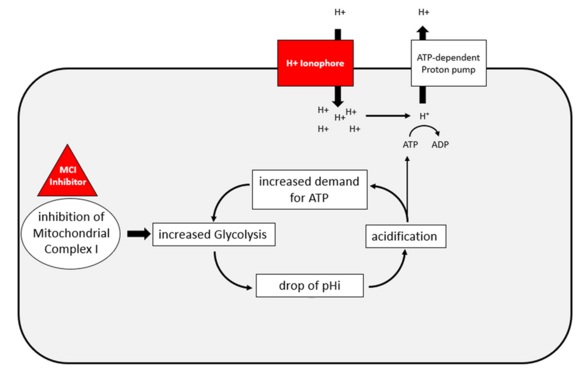The Warburg Trap: A novel therapy approach targeting osteosarcoma
Osteosarcoma is the most common type of malignant bone cancers predominantly affecting the long bones of children and young adults. Even though the five-year survival rate for non-metastatic osteosarcoma is 60-70%, the survival rate for patients with metastatic or recurrent disease is less than 20%. Unfortunately, no significant improvement of patient outcome has been achieved within the last decades.
The so-called “Warburg Trap” offers a promising approach for a completely new type of osteosarcoma therapy. This effect takes advantage of two major hallmarks of tumor cells:
The preference of tumor cells for anaerobic glycolysis over the oxidative phosphorylation pathway for energy metabolism, the so called “Warburg effect” and as a consequence a reversed pH-gradient that is characterized by extracellular acidosis and intracellular alkalization.
Several “Food and Drug Administration” (FDA) approved drugs including the diabetes type II drug Metformin are able to lower intracellular pH (pHi) of tumor cells, but not normal cells, to a level critical for survival.
Using several drug combinations consisting of H+-ionophores and mitochondrial complex I (MCI) inhibitors, this effect can be enhanced, triggering an irreversible cycle leading to tumor cell death. This self-enhancing cycle was named "Warburg Trap".

The main aim of this study is to investigate the suitability of the “Warburg Trap” approach for osteosarcoma treatment. The degree of cytotoxicity, the optimal drug combinations and concentrations as well as tumor cell specificity will be analyzed in vitro using osteosarcoma cell lines and the efficiency for in vivo treatment will be investigated using a chicken chorioallantoic membrane CAM assay.


